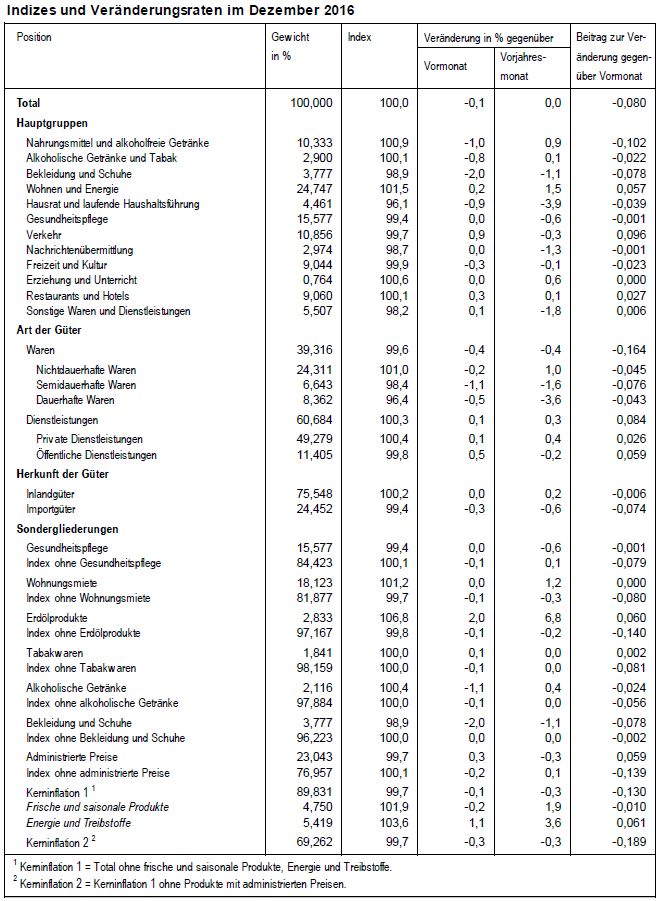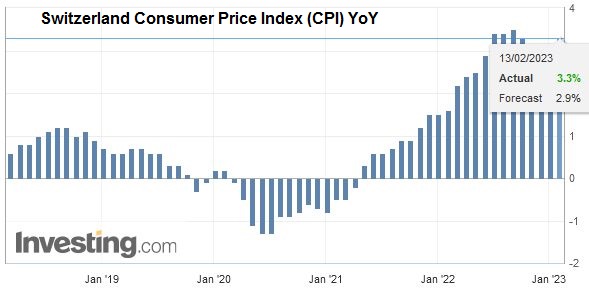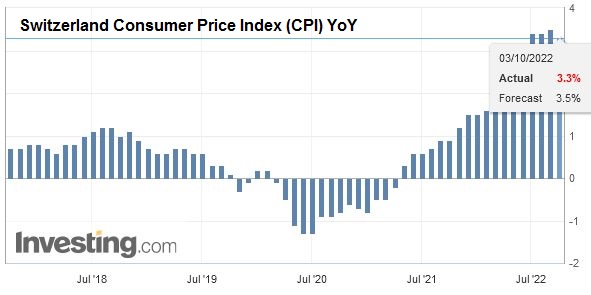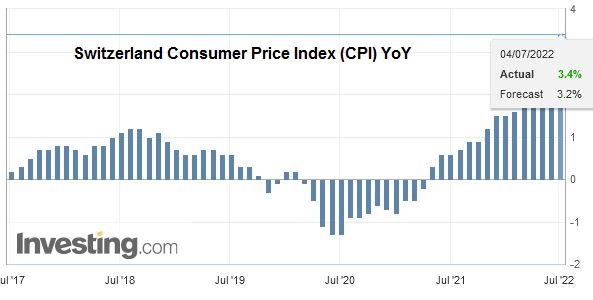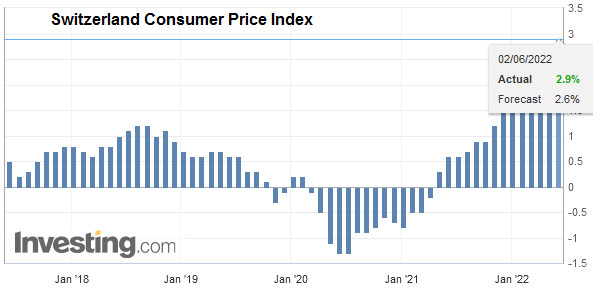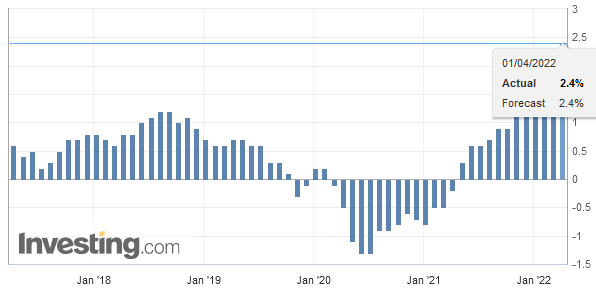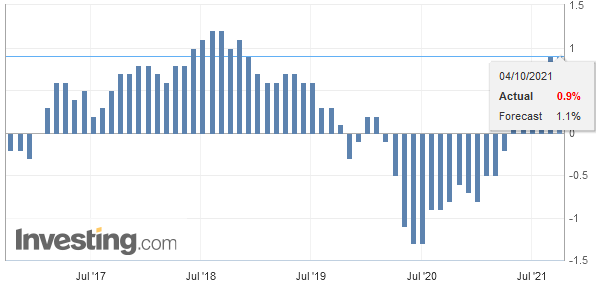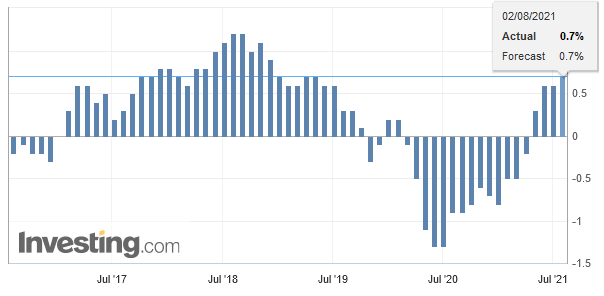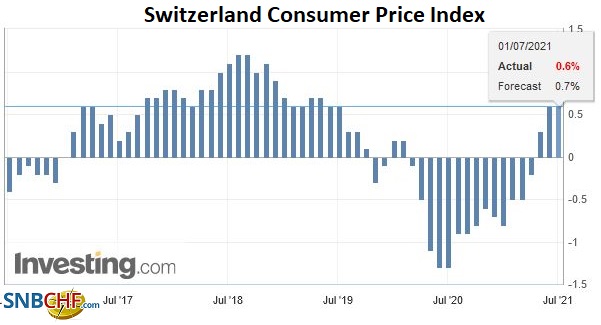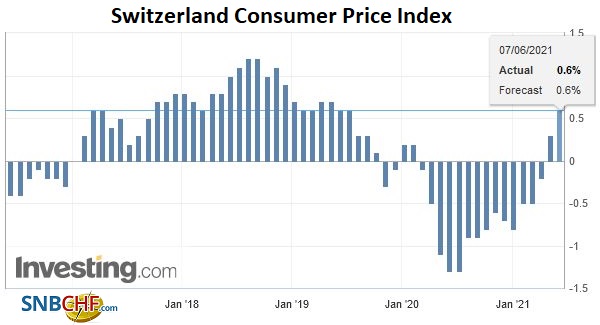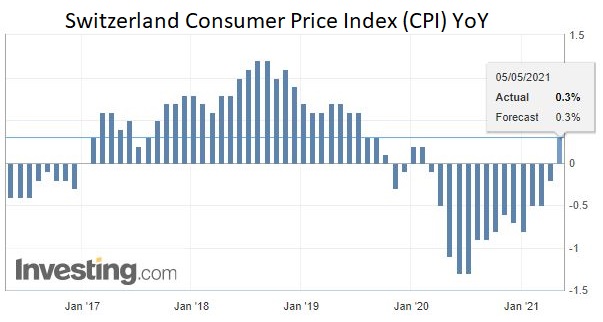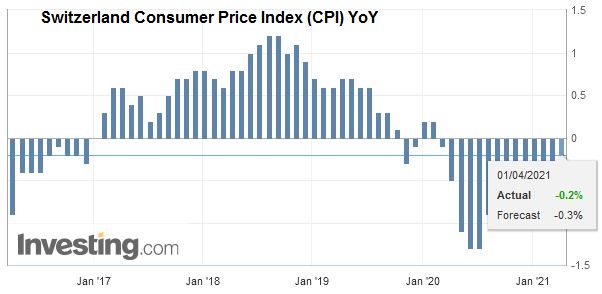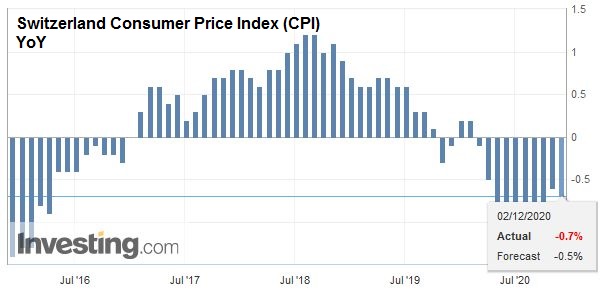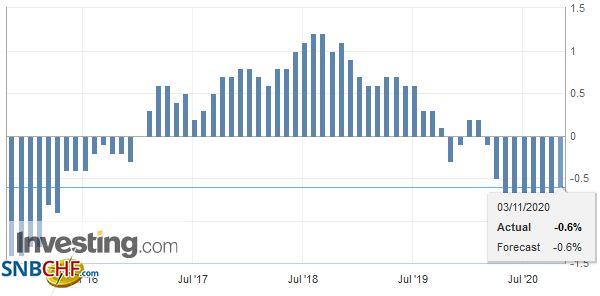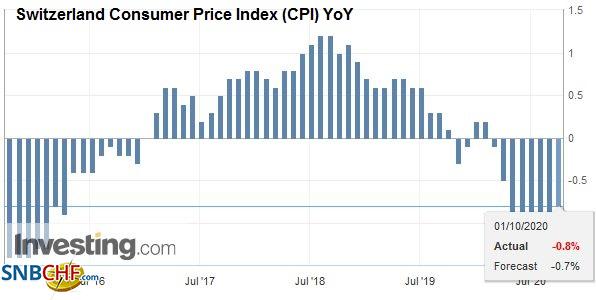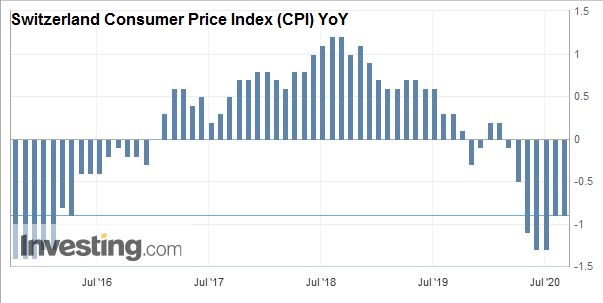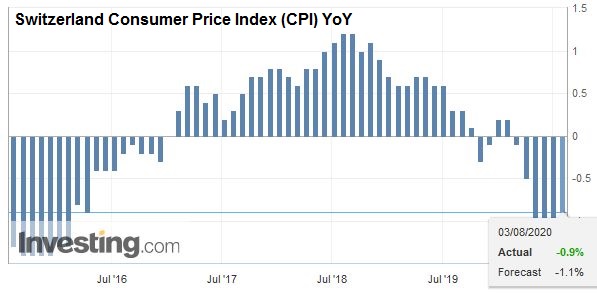Energy prices in Switzerland turned around from a minus 2.4% in November to a +6.8% in December. Oil prices had seen its trough exactly one year ago. Especially in Germany and Spain, this translated into inflation rates, that are close to the ECB target rate of 2%.
Switzerland still saw downwards pressures caused by cheaper imports. Despite rising energy costs, total prices of imported goods are down 0.6%. Consumers obtain prices advantages on imported products often with a big delay.
Energy inflation
Energy and food prices are part of the so-called “core inflation rates”, because they are very volatile. Switzerland has seen the biggest change in energy prices with +6.8%.
The reason is that energy and fuels are taxed less than in the other European countries. For the U.S. we are still waiting for the December CPI, that could contain even bigger changes in energy prices.
Italy has a very low inflation rate, because energy prices are not fully contained yet in the CPI.
Food inflation
Highest in Germany with 2.5%, lowest in the United States with -0.4% (November data for the U.S., hence the December energy price rise is not contained yet).
Especially the poor struggle with higher costs for food.
Shelter inflation
Highest in the U.S. with 3.6% and lowest in Italy with minus 1.9%. Again the poor are punished when rents go up.
Rents in Italy or Spain are steady or falling. In Germany and Switzerland rent control prevents that asset price inflation moves into consumer prices.
Moreover Switzerland has more and more housing supply that help to contain housing costs.
Health Care inflation
The Americans must be pay 4.3% more for health care, again a punishment for many poor. But in Switzerland the state implements measure to contain rising prices. The same is happening in the rest of Europe.
Weights
We indicated the weights in the CPI basket for Switzerland and the United States. Shelter is taking one third of the CPI basket of Americans, this figure is lower in most European countries. For the U.S., the basket also measures owner occupied rent. In Europe most countries do not measure owner-occupied rent inside the CPI basket.
| Inflation Rate YoY and Main Drivers |
Switzerland | Germany | Euro Area | Spain | Italy | UK | United States | Weight (Switzerland) | Weight (U.S.) |
| Total | 0.0% | +1.7% | +1.1% | +1.5% | +0.5% | +1.2% | +1.7% | 100% | 100% |
| Food | +0.9% | +2.5% | +1.2% | +2% | +0.8% | -1.8% | -0.4% | 10.2% | 13.7% |
| Shelter/Rents | +1.2% | +1.5% | +1.2% | 0 % | -1.9% | +1.0% | +3.6% | 24.7% | 33.4% |
| Health Care | -0.6% | +1.6% | Not published | 0% | +0.4% | +1.5% | +4.3% | 15.6% | 8.6% |
| Energy & Fuels | +6.8% | +2.5% | +2.5% | +2.5% | -1.9% | -1.6% | +1.1% | 5.5% | 7.1% |
| Source | Swiss Statistics | Destatis (Flash estimate) |
EuroStat (Flash estimate) |
INE (Flash, partial data yet) |
Istat | ONS (Nov data) |
BLS (Nov data) |
From the official press release by Swiss Statistics:
Swiss Consumer Price Index in December 2016:
Consumer prices fall by 0.1% MoM, Unchanged YoY
| The Swiss Consumer Price Index (CPI) fell by 0.1% in December 2016 compared with the previous month, reaching 100.0 points (December 2015=100). Inflation was 0.0% in comparison with the same month in the previous year. The average annualised inflation rate in 2016 was -0.4%. |
Switzerland Consumer Price Index (CPI) YoY, December 2016(see more posts on Switzerland Consumer Price Index, )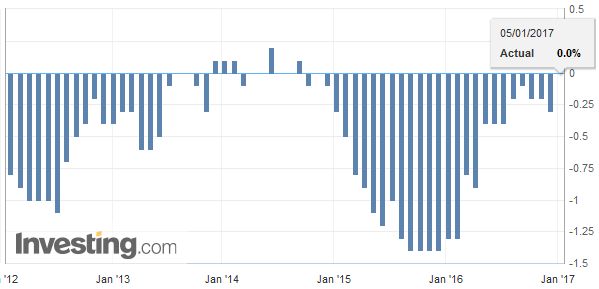 Source: Investing.com - Click to enlarge |
Download press release: Swiss Consumer Price Index in December 2016
German text:
Full story here Are you the author? Previous post See more for Next postLandesindex der Konsumentenpreise im Dezember 2016
Durchschnittliche Jahresteuerung 2016 von -0,4 Prozent
Neuchâtel, 05.01.2017 (BFS) – Der Landesindex der Konsumentenpreise (LIK) sank im Dezember 2016 gegenüber dem Vormonat um 0,1 Prozent und erreichte den Stand von 100,0 Punkten (Dezember 2015=100 Punkte). Im Vergleich zum Vorjahresmonat betrug die Teuerung 0,0 Prozent. Die durchschnittliche Jahresteuerung betrug im Jahr 2016 -0,4 Prozent. Dies geht aus den Zahlen des Bundesamts für Statistik (BFS) hervor.
Die durchschnittliche Jahresteuerung 2016 entspricht der Veränderungsrate zwischen dem Jahresmittel 2016 und dem Jahresmittel 2015. Das Jahresmittel berechnet sich als arithmetischer Durchschnittswert der 12 Monatsindizes des Kalenderjahres. Im Jahr 2016 betrug die durchschnittliche Jahresteuerung -0,4 Prozent. Der Rückgang ist primär auf tiefere Preise für Erdölprodukte und Automobile zurückzuführen. Die Preise der Inlandgüter gingen im Durchschnitt um 0,1 Prozent zurück, während diejenigen der Importgüter um 1,4 Prozent zurückgingen. Im Jahr 2015 hatte die durchschnittliche Jahresteuerung -1,1 Prozent betragen, im Jahr 2014 0,0 Prozent.
Der Rückgang des LIK um 0,1 Prozent gegenüber dem Vormonat ist hauptsächlich auf tiefere Preise für Pauschalreisen ins Ausland sowie gesunkene Preise im Bekleidungssektor zurückzuführen. Auch für Lebensmittel musste im Dezember weniger bezahlt werden. Demgegenüber sind die Preise für Heizöl, öffentlichen Verkehr und Luftverkehr angestiegen.
BUNDESAMT FÜR STATISTIK
Medienstelle
Tags: food inflation,newslettersent,Switzerland Consumer Price Index,Switzerland inflation










